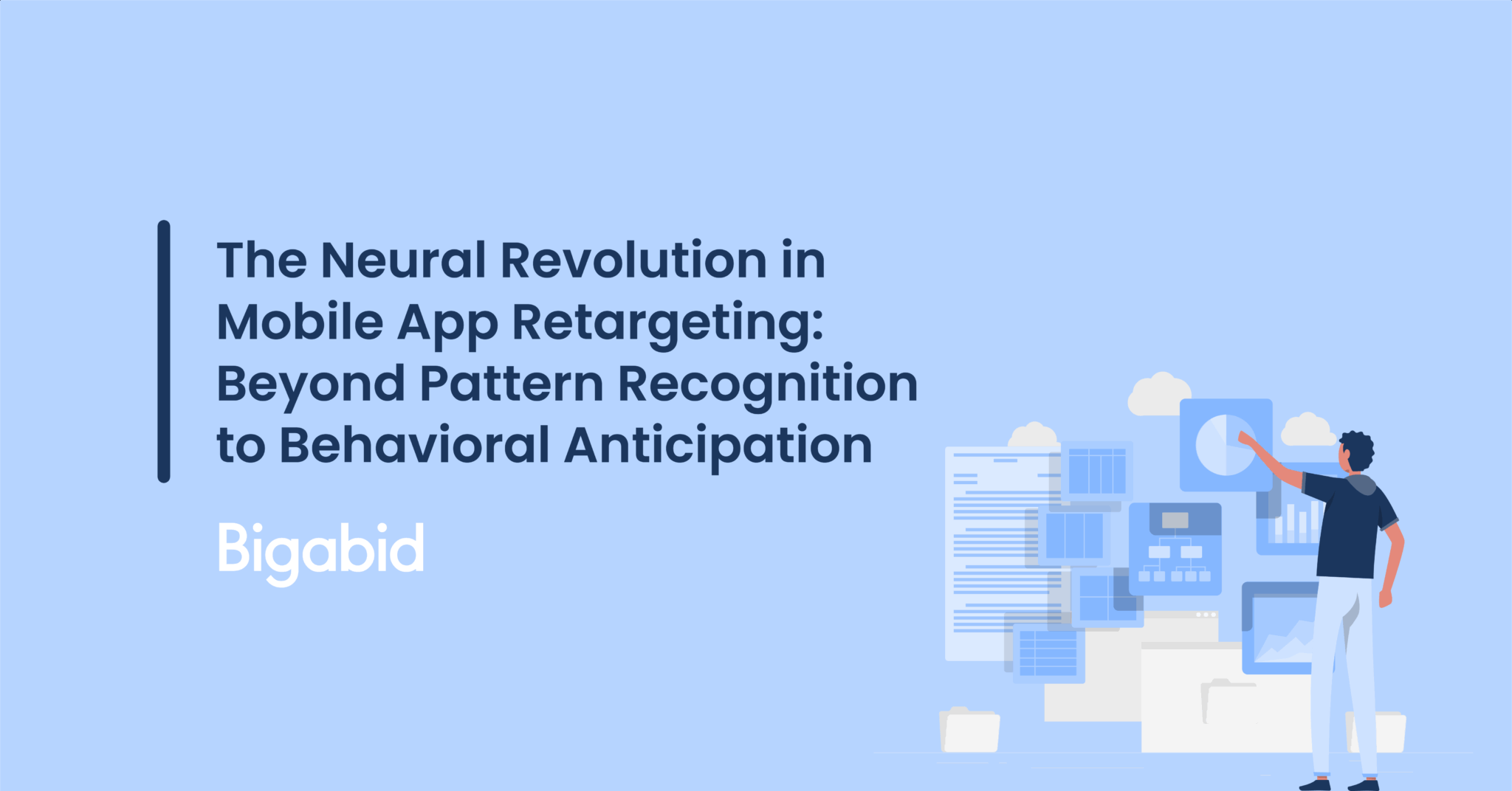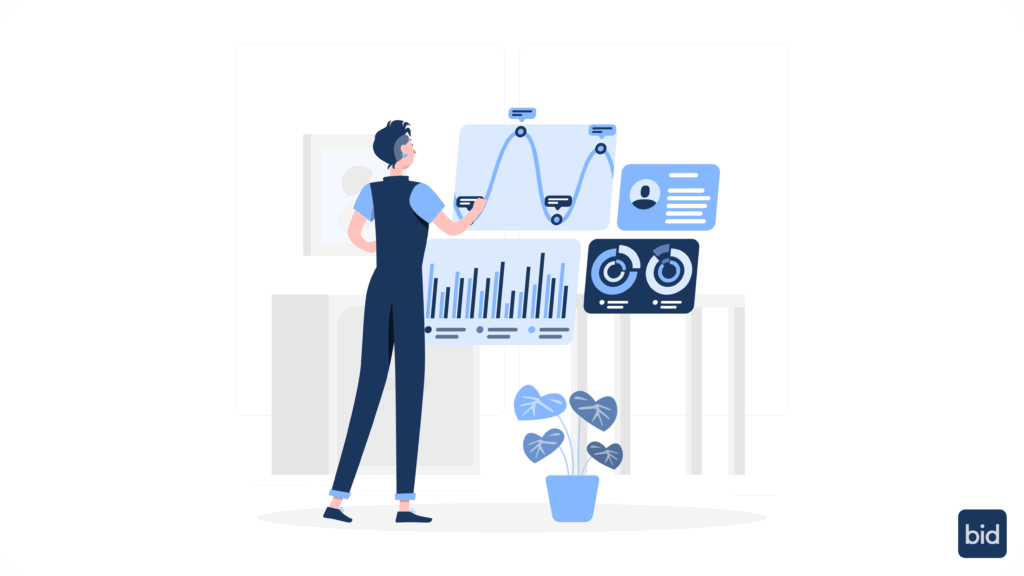
A Deep Exploration of Emergent AI Architectures, Quantum-Inspired Algorithms, and the Future of Predictive User Engagement

The mobile app retargeting landscape is experiencing a fundamental paradigm shift that extends far beyond traditional machine learning approaches. While the industry has largely focused on optimizing existing neural network architectures, the most significant breakthroughs are emerging from entirely new computational paradigms: neuromorphic computing, quantum-inspired algorithms, and what researchers are calling “temporal neural architectures” that can predict user behavior across extended time horizons with unprecedented accuracy.
This whitepaper explores these cutting-edge developments, examining how next-generation neural networks are not just processing data more efficiently, but fundamentally reimagining how we understand user intent, temporal behavior patterns, and the very nature of digital engagement. Drawing from extensive production experience processing terabytes of data and billions of records daily, we delve into the scientific foundations driving these innovations and their profound implications for mobile app retargeting strategies.
While deep learning has revolutionized mobile advertising, we’re approaching the theoretical limits of what traditional architectures can achieve. The most sophisticated convolutional and recurrent neural networks still operate on fundamentally classical computational principles—processing information sequentially and making predictions based on historical patterns.
The breakthrough lies in understanding that human behavior isn’t just complex; it’s inherently quantum-like in its probabilistic nature. Users exist in superposition states of intent until the moment of interaction, and their behavioral patterns exhibit quantum entanglement-like correlations across seemingly unrelated touchpoints.

Traditional neural networks simulate brain function through software, but neuromorphic chips physically replicate neural structures using analog circuits. This isn’t just about processing speed—it’s about fundamentally different computational approaches:
Spiking Neural Networks (SNNs): Unlike traditional neurons that output continuous values, spiking neurons communicate through precisely timed electrical pulses, just like biological neurons. For retargeting, this means:
Memristive Architectures: These chips store information in their physical structure, creating networks that literally remember through their material properties. This enables:

While true quantum computers remain limited, quantum-inspired algorithms running on classical hardware are delivering remarkable results:
Quantum Approximate Optimization Algorithm (QAOA) for User Clustering: Traditional clustering algorithms struggle with the combinatorial complexity of modern user segmentation. QAOA-inspired approaches can:
Variational Quantum Eigensolver (VQE) Adaptations: These algorithms excel at finding optimal solutions in high-dimensional spaces, perfect for:

Current RNNs and LSTMs excel at processing sequences, but they fundamentally misunderstand human temporal behavior. Users don’t follow linear patterns—they exhibit complex rhythms, cycles, and phase transitions that require entirely new architectural approaches.
Chronos Networks: These experimental architectures incorporate multiple temporal scales simultaneously:
Phase Transition Detection: Advanced networks can now identify when users are transitioning between behavioral states:

The next frontier involves networks that don’t just identify patterns but understand causal relationships:
Interventional Learning: Networks that can predict how specific interventions (retargeting ads) will affect user behavior, not just correlate with past outcomes.
Counterfactual Modeling: AI systems that can simulate what would have happened without retargeting intervention, enabling true incrementality measurement at individual user level.
Causal Discovery Networks: Automatically identifying which user actions are causes versus effects, revolutionizing attribution modeling.

Modern transformer architectures with attention mechanisms are exhibiting properties that parallel biological consciousness:
Global Workspace Theory Implementation: Networks that maintain a “global workspace” of user information, allowing different specialized modules to share insights about user behavior in ways that mirror conscious thought processes.
Metacognitive Layers: Neural networks that can reflect on their own predictions, adjusting confidence levels and identifying areas of uncertainty. For retargeting, this means:
Advanced networks are beginning to develop rudimentary “theory of mind”—the ability to model what users are thinking and feeling:
Emotional State Inference: Networks that don’t just predict actions but infer emotional states from behavioral patterns:
Intent Hierarchy Modeling: Understanding that users have multiple, nested layers of intent:

Traditional segmentation assumes users exist in Euclidean space, but actual user behavior exists on complex manifolds in high-dimensional space:
Riemannian Neural Networks: These architectures operate directly on curved manifolds, enabling:
Topological Data Analysis (TDA): Mathematical techniques that identify the shape of data:
Mutual Information Maximization: Networks designed to maximize mutual information between user actions and internal representations, ensuring they capture all behaviorally relevant information.
Entropy-Based Surprise Detection: Systems that measure the “surprise” of user actions, automatically identifying anomalies and behavioral shifts.
Information Bottleneck Theory: Optimizing networks to retain only information relevant for prediction while discarding noise.

Traditional federated learning is just the beginning. Advanced approaches include:
Differential Privacy with Neural ODEs: Continuous-time neural networks that can learn user patterns while providing mathematical privacy guarantees.
Homomorphic Encryption for Neural Networks: Computing predictions on encrypted user data without ever decrypting it.
Secure Multi-Party Computation: Multiple parties collaborating to train models without sharing raw data.
Proof-of-Behavior Systems: Cryptographic protocols that prove users exhibit certain behaviors without revealing the behaviors themselves.
Privacy-Preserving Clustering: Identifying user segments without any party knowing which users belong to which segments.

Bigabid’s deep learning infrastructure processes terabytes of data and billions of records daily, utilizing state-of-the-art distributed computing environments. The company’s models are both wide and deep, allowing them to capture complex interactions in data and generalize well from sparse datasets. By optimizing based on all available signals, Bigabid delivers stellar campaign results without relying on potentially erroneous or irrelevant third-party data.
This extensive production experience has revealed insights that academic research often misses:
Emergent Behavioral Patterns: At massive scale, user behavior exhibits mathematical structures that only become visible when processing billions of interactions simultaneously.
Computational Bottlenecks: The specific limitations of current architectures become apparent only when deploying at enterprise scale, revealing where next-generation approaches provide the greatest advantage.
Real-World Performance: Production systems reveal the gap between theoretical capabilities and practical implementation, guiding research toward commercially viable breakthroughs.
Organizations implementing next-generation neural network approaches are achieving remarkable results:
Hybrid Neuromorphic-Classical Systems: Initial deployments combining traditional GPUs with neuromorphic chips for specific use cases:
Advanced Attention Architectures: Transformer architectures specifically designed for sequential user behavior:
Quantum-Classical Hybrid Optimization: True quantum processors handling specific optimization problems:
Consciousness-Inspired Architectures: AI systems with rudimentary self-awareness:
Biological-Digital Hybrid Systems: Integration of biological and digital processing:
True Quantum Neural Networks: When quantum computers mature:

These advances fundamentally change how we approach user lifecycle management:
Predictive User Lifetime Value: Instead of estimating LTV based on early behavior, advanced networks can predict user value across their entire potential lifecycle, including predicting major life changes that affect app usage.
Preemptive Intervention: Rather than reactive retargeting, AI systems that can intervene before users even realize they’re becoming disengaged.
Behavioral Inoculation: Understanding how to expose users to small negative experiences that build resilience against future churn triggers.
Neural Style Transfer for Ads: AI that can adapt creative content to match individual user aesthetic preferences while maintaining brand consistency.
Generative User Experience: Dynamically generated app interfaces optimized for individual users in real-time.
Emotional Resonance Optimization: Content that’s optimized not just for engagement but for specific emotional responses that drive long-term loyalty.
As AI becomes more sophisticated at predicting and influencing behavior, we face unprecedented ethical challenges:
Cognitive Liberty: The right to mental self-determination becomes crucial as AI becomes better at predicting and potentially manipulating thoughts and decisions.
Behavioral Autonomy: Ensuring users retain agency even as AI becomes extremely good at predicting their choices.
Informed Consent Evolution: Traditional consent models become inadequate when AI can predict user preferences better than users themselves.
Interpretability Crisis: As neural networks become more sophisticated, understanding their decision-making becomes exponentially more difficult.
Robustness and Adversarial Attacks: Advanced AI systems may be vulnerable to sophisticated manipulation attempts.
Computational Resource Requirements: The most advanced approaches require enormous computational resources, potentially limiting access to large tech companies.
Neurosymbolic Integration: Combining neural networks with symbolic reasoning for more robust user understanding.
Continual Learning: Networks that continuously adapt to changing user behavior without forgetting previous learning.
Multi-Modal Fusion: Integrating text, audio, visual, and behavioral data for comprehensive user understanding.

Distributed Computing Architecture: Advanced neural networks require sophisticated infrastructure:
Signal Optimization: Success depends on leveraging every available behavioral signal:
Iterative Development: Advanced AI systems require systematic approach:

The future of mobile app retargeting lies not in incremental improvements to existing approaches, but in fundamental paradigm shifts toward AI systems that approach genuine understanding of human behavior. These systems will move beyond reactive pattern recognition toward proactive behavioral anticipation, creating user experiences that feel less like advertising and more like genuine understanding.
The companies that will dominate the next decade of mobile engagement are those investing in these fundamental advances today—not just optimizing existing neural networks, but pioneering entirely new computational paradigms. The science is advancing rapidly, and the practical applications are closer than most realize.
Organizations like Bigabid, with extensive production experience processing billions of user interactions daily, are already demonstrating the practical viability of these advanced approaches. Their success in deploying wide and deep neural networks at massive scale, combined with breakthrough results in user prediction and campaign optimization, provides a roadmap for the industry’s evolution toward next-generation AI systems.
As we stand at this threshold, we must remember that these tools are not just about better targeting or higher conversion rates. They represent our growing ability to understand and work with the deepest patterns of human behavior and decision-making. The responsibility that comes with this capability is profound, and how we choose to develop and deploy these technologies will shape the future of human-AI interaction for generations to come.
The neural revolution in mobile app retargeting is just beginning, and the most exciting discoveries lie ahead. Organizations that embrace these advanced approaches—with proper consideration for ethical implications and user privacy—will not only achieve superior campaign performance but will help define the future of how AI and humans collaborate in the digital ecosystem.
The opportunity is immense, the technology is maturing rapidly, and the competitive advantages are substantial. The question is not whether these advances will transform mobile app retargeting, but which organizations will lead that transformation and reap the benefits of being early adopters of truly revolutionary AI capabilities.